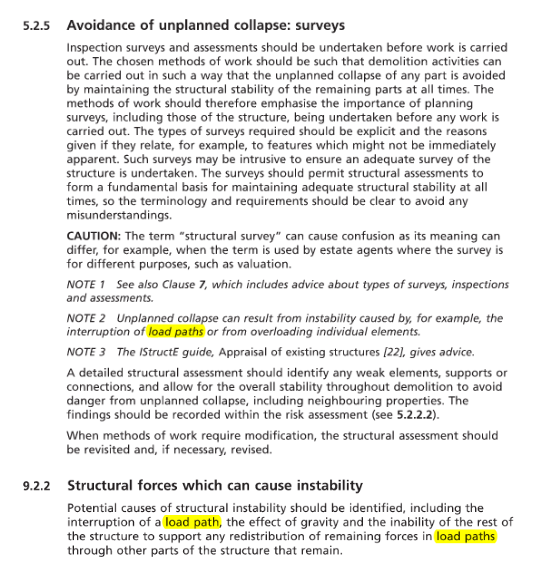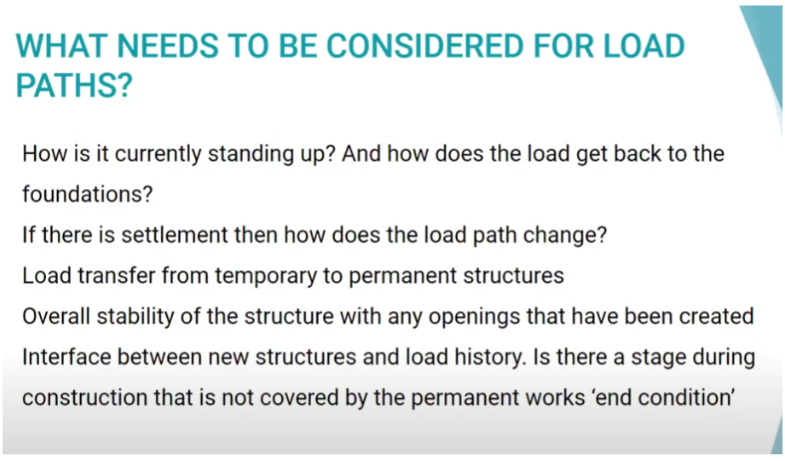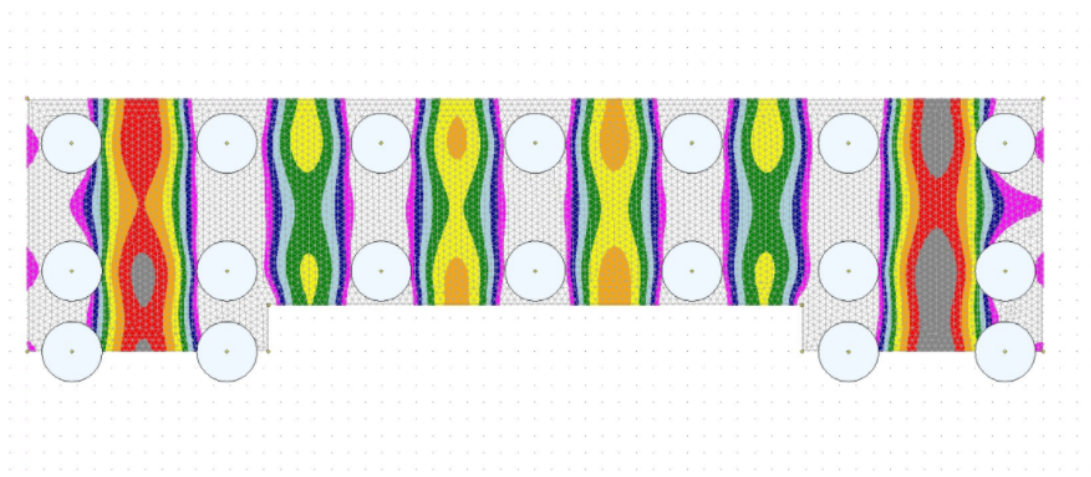Understanding the load paths of a structure is an important part of construction and demolition schemes as it allows engineers to understand how a structure works in its current condition.
Demolition schemes that do not accurately understand the load paths and how they change as structures are altered, can lead to excessive deflections, instability or collapse.
What Is A Load Path?
A load path is how a load travels through a structure to get to its final destination, which is typically the ground, but for isolated elements may be back to the existing structure or stability system.
BS6187 Load Paths for Demolition
There is a residual risk that loads will be interrupted during the demolition of complex structures and during cut and carve works.
BS 6187 is the code of practice for demolition, and load paths are discussed as potential causes of unplanned collapses, highlighting why load paths are so important for temporary works and demolition engineers.
BS 6187 states that “any demolition should be based on a complete understanding of the nature of the structure”
Therefore knowing the load path is essential to understanding the interrelationships between different structural elements.
This can be complicated on structures where there is incomplete information about a structure and previous alterations, requiring analysis of archive drawings and potentially opening up works to develop this understanding.

How To Understand What The Load Path Is
Archive drawings can be of assistance in understanding the load paths of a structure. However, these drawings need to be verified as alterations and changes to the structure may impact the loads in a way not reflected in the original structural drawings.
The load paths should be verified when carrying out site investigations of the structure.
These site investigation works would include a soft strip of the structure to expose structural elements followed by a walk down to compare drawings to actual conditions whilst looking for issues, inconsistencies or unexpected elements. Where there are inconsistencies, engineers could perform breakouts to inspect the hidden hidden elements.
Structural indications from site investigation that load paths may have changed or elements are overstressed could include:
- Load-related cracking patterns
- Excessive deflections in structural members
- Weathering or deterioration consistent with movements caused by loads
- Signs of repairs/reinforcing
Load Path Considerations
There are a number of different considerations when analysing the load paths of a demolition project.
 Current Structure Load Paths
Current Structure Load Paths
Understand how the building is currently standing and supporting vertical and lateral loads. Analysing the current load paths through the structure to the foundations.
Settlement
Settlement in one area of a structure due to propping and the reduced stiffness can increase the loads in other elements. One solution is “pre-loading” of the propping i.e. intentionally applying load to props prior to demolishing elements.
Overall Stability With New Openings
Creating new openings in floors and walls may alter the load paths of a structure. It is important to assess the impact on stability, as new openings can significantly change horizontal load paths.
Load Transfer Between Temporary and Permanent Structures
As noted above with regard to settlement, the permanent works may require preloading to ensure other structural elements are not overloaded during the transfer of load from the temporary to the new permanent works.


